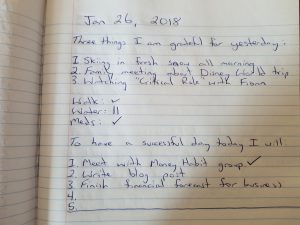If you are reading this then 2018 is at an end (or gone) and we are welcoming 2019, either eagerly or in some other way.
 Please look for a moment at the photo. It is of the meditation pod at Auroville, outside of Puducherry India.
Please look for a moment at the photo. It is of the meditation pod at Auroville, outside of Puducherry India.
It is known as the Matrimandir.
Auroville, City of Dawn, is an intentional community. It was first envisioned by a guru called Mirra Alfassa. She was a European woman who devoted her life to spirituality.
The City of Dawn, is built on land that was “approximately 20 square kilometers of barren wasteland.”
The earth was unable to support both plant or animal life.
A small group of believers began (what must have looked like madness to the non–believers) to rehabilitate the land by planting trees. When I visited about 4 weeks ago, the area was a veritable forest. Species of plant life that had died out were flourishing. Animal life was abundant and humans from many countries were permanent residents in the village. Permanent residents are expected to work 8 hours daily in exchange for living there.
It seems to be flourishing by all accounts.
The inauguration ceremony was attended by 124 nations who sent delegates with gifts of their earth to be all placed together in one urn. It was held on Wednesday 28th, 1968.
On that day, I was living in Trinidad and was 15 years old. I was actively filling in to be the caretaker of an 11 year old brother and a 7 year old sister. I was in over my head.
I had no idea that on the other side of the earth, a small group of people were gathering to celebrate a vision of a future and that as a 65 year old in 2018, I would be lucky enough to visit.
That 15-year-old, was also unaware that she would go on to do some amazing things.
Things like finish a triathlon and marathon after she turned 50 or get a handle of clinical depression and make her pain the foundation of a nonprofit, or have a wonderful husband and children, or speak at the UN, or (and most importantly) end generational violence in her lifetime.
I was unaware of all of this and more.
As I write this message to you, I am blissfully unaware of what will happen tomorrow, next week or 10 years from now.
I am not worried about not knowing.
I have learned to trust and believe that if I follow my path to end violence to girls and women, I will be fully living my destiny. I also know that when I do not trust my gut, I get burned.
I did not always believe I had a destiny. I believe it now.
 I am asking you to give yourself time to uncover your own destinies and to allow yourself to take small steps in the direction of what you know that destiny to be.
I am asking you to give yourself time to uncover your own destinies and to allow yourself to take small steps in the direction of what you know that destiny to be.
Some of the tools to help you uncover your destiny include physical exercise, yoga, meditation, gratitude journaling, setting and keeping healthy boundaries by saying No to things that do not support what you know your destiny to be.
How we can help:
At www.indranislight.org/caregiver-resources we have classes to give you a head start of some of these tools. You can find a podcast called Caring for the Caregiver where we take deep dives into real questions by real people and give some ideas to handle life stresses.
I wish you a happy and joy-filled 2019. I wish you the clarity of mind to find joy in the midst of inevitable pain and I wish you the courage to love yourself as deeply as you love the most precious person on your life.
Love and light
indrani





